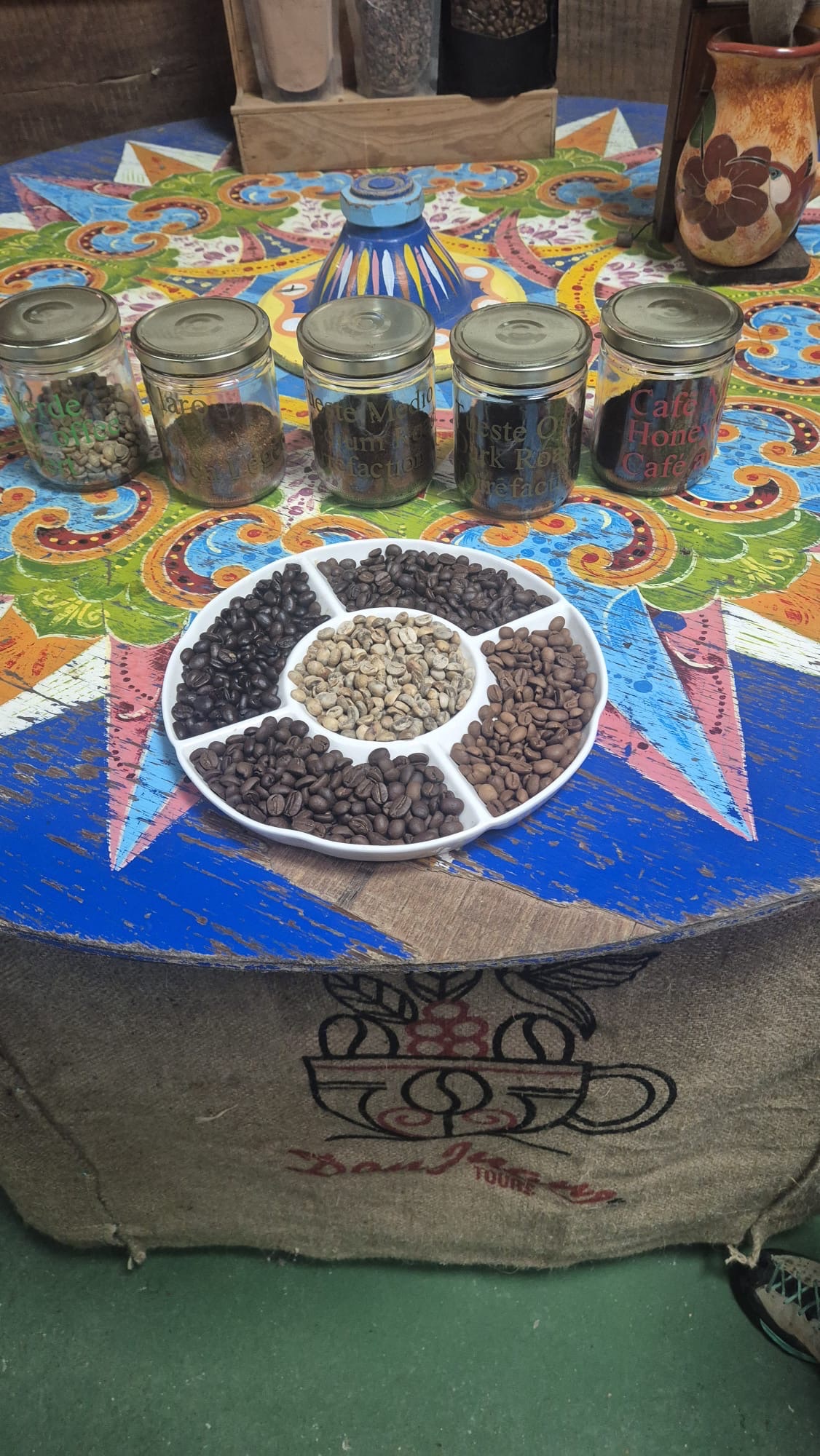Introduction: What’s behind your cup of coffee?
Every sip of coffee is the result of a long journey. The bean in your cup has passed through many hands: cultivation, harvesting, processing, drying, roasting—and let’s not forget: fermentation. In this article, we’ll dive into the coffee production process and see why every step matters.
1. Cultivation: Where coffee grows
Coffee is grown in tropical regions along the “coffee belt” around the equator. The two most common species are Arabica (smooth, acidic) and Robusta (strong, high in caffeine). Ideal conditions: elevations between 800–2000 meters, steady temperatures, and plenty of rainfall.
2. Harvesting: Skilled handwork
Coffee cherries don’t ripen all at once, which is why hand-picking is standard for high-quality coffee. Only the ripe, red cherries are harvested. In flatter regions with Robusta, machines are more commonly used.
3. Processing: A key differentiator
Now it gets interesting: the coffee bean must be separated from the fruit pulp. There are several methods:
- Washed: Beans are pulped, fermented, and washed. Result: clean, fruity flavors.
- Natural: Cherries dry whole. Result: sweeter, more intense notes.
- Honey processed: A mix. Some pulp remains. Result: complex flavor profiles.
4. Fermentation: Microbes shaping flavor
Almost all processing methods involve fermentation. Natural yeasts and bacteria break down sugars and pulp. This process lasts from a few hours to several days and significantly impacts the bean’s flavor. In specialty coffee, fermentation is even controlled using tanks or added microbes for unique profiles.
5. Drying: Sun and patience
After fermentation, beans must be dried to about 11% moisture. This is traditionally done on “African beds” under the sun or in mechanical dryers.
6. Roasting: From green to brown
The dried green beans go to the roaster. Here, hundreds of aroma compounds develop through the Maillard reaction and caramelization. Roasting defines flavor, acidity, bitterness, and body. Light roasts highlight fruity notes; dark roasts offer bold, bitter flavors.
7. Grind & brew: The final stretch
Depending on the method (espresso, filter, French press), the grind must match. Freshly ground coffee always tastes better since aromas fade quickly. Water quality and temperature also play a key role.
Conclusion: Coffee production is craft and science
From tropical farms to your mug, every step in coffee’s journey involves skill, experience, and microbiology. Understanding the coffee-making process lets you savor each cup more deeply—and maybe even discover something new. Cheers!
